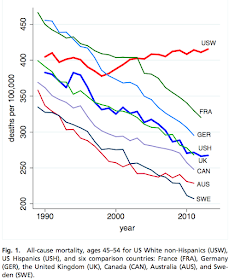Alison Frankel writing at Reuters, Wednesday March 29:
You know a case is momentous when a seemingly routine proposed briefing schedule turns into a hot dispute. Waymo’s patent and trade secrets suit accusing Uber of hijacking its technology for driverless cars is only five weeks old, but lawyers for both sides are already deep in litigation chess games....MORE
On Monday, Uber’s lawyers at Morrison & Foerster and Boies Schiller & Flexner filed a motion to compel arbitration of Waymo’s trade secrets and California unfair competition claims. The motion claimed Waymo’s lawyers at Quinn Emanuel Urquhart & Sullivan are trying to get away with a bit of litigation trickery.
According to Uber, the crux of Waymo’s case, filed in federal court in San Francisco, is that engineer Anthony Levandowski, who led Waymo’s self-driving tech team for years, downloaded more than 14,000 sensitive files before he left the company to start up his own self-driving venture, which was later acquired by Uber.
Levandowski, Uber said, signed two different employment contracts during his nine-year stint at Google and Waymo, both of which are subsidiaries of Alphabet. The agreements contained provisions requiring the engineer to arbitrate disputes with the company.
Uber’s lawyers argued that because Waymo is accusing Uber of benefiting from Levandowski’s supposed violation of his employment contract, Levandowski’s arbitration clause applies.
Uber’s brief cited cases to back its argument, which is based on the legal principle of equitable estoppel.
In the closest parallel to the Waymo case, a federal judge in San Jose ordered the tech company Torbit to arbitrate its case against a fired software developer who allegedly misused Torbit trade secrets when he started his own company, Datanyze.
Datanyze wasn’t subject to the employment agreement between Torbit and the developer, but the judge ruled the claims against the company were intertwined with allegations against the former employee.
But Waymo, unlike Torbit in the Datanyze case, did not name its former employee as a defendant. It sued only Uber, not Levandowski, the former Waymo engineer who supposedly misappropriated Waymo data and brought it to his new employers at Uber.
"DELIBERATE ATTEMPT" TO BYPASS PRECEDENT
Uber’s motion called that elision a deliberate attempt to get around precedent requiring Waymo to go to arbitration. “Despite the myriad allegations about Levandowski’s serious misconduct while a Waymo employee, Waymo omits him as a named defendant,” Uber’s motion said. “Waymo’s purpose for proceeding in this curious manner seems clear: through artful pleading, it hopes to avoid arbitrating the misappropriation … claims at all costs.”
Waymo, meanwhile, contends there is something fishy about the timing of Uber’s motion to compel arbitration. Uber first suggested at a hearing on March 16 that it would try to force Waymo into arbitration instead of litigating in federal court.
On March 22, according to Waymo, Uber lawyer Arturo Gonzalez of MoFo said in an email to a Waymo lawyer that the motion would be filed the following day. Instead, Uber waited until three days later to file its motion.
The timing is significant because the judge overseeing the litigation, U.S. District Judge William Alsup of San Francisco, has scheduled a May 4 hearing on Waymo’s motion for a preliminary injunction to block Uber from using supposedly misappropriated information.
The judge told both sides at the March 16 hearing that he didn’t want to go to the trouble of a preliminary injunction hearing if the case is going to end up in arbitration....





